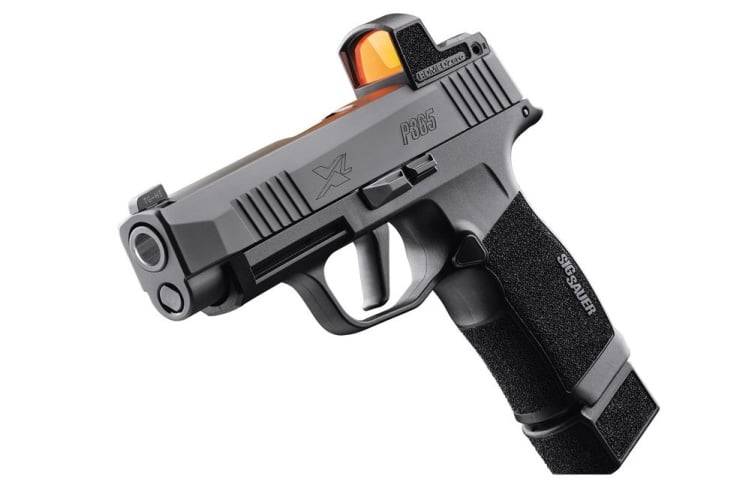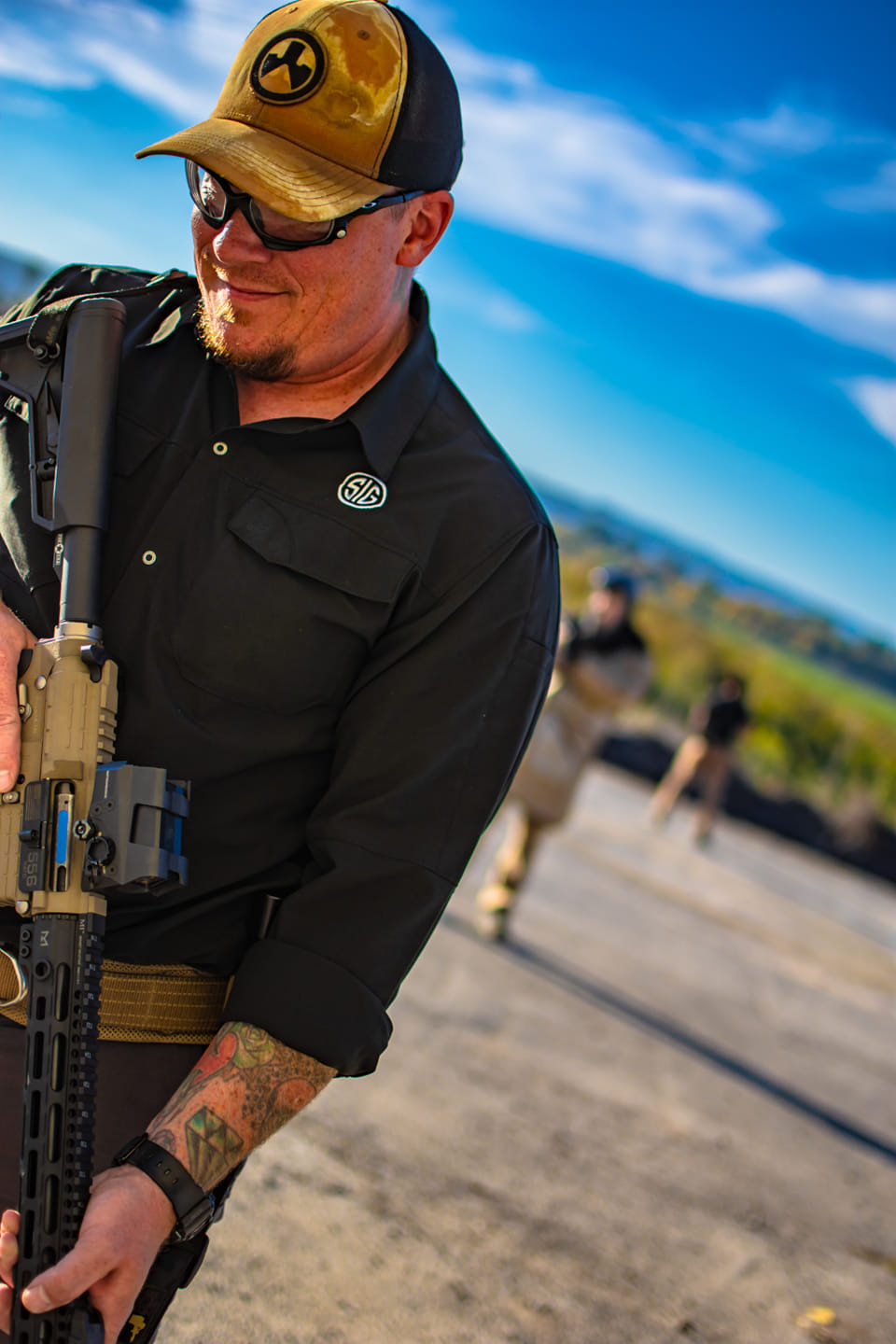In this week’s MagLife Podcast, Daniel meets with Jack Lapham, Sig Electro Optics Product Manager, in charge of enclosed red dots, magnifiers, and battle sights. While already having a rich history in the firearms industry, Sig Sauer has firmly established itself within the optics world with their Romeo and Juliet product lines.
Jack dives into Sig’s latest offerings, the Romeo 7s and the Juliet 3 Micro. Along the way, he discusses with Daniel the developmental process and brief history of SIG optics, other soon to be released products, and general trends within the usage of optics.
Host: Daniel Shaw
Guest: Jack Lapham
Introduction/Timeline: Eric Huh
03:44 What is the design philosophy and vision behind SIG Electro Optics?
Jack recalls the origins of Sig Optics when the division itself was only 4 people and much of their materials and manufacturing had to be done by outside sourcing. The goal, however, was always to bring their products into some form of an in-house production within their Oregon-based facility. The key was to build enough infrastructure and employees to do so.
04:36 Sig is now fully capable of in-house manufacturing of its signature optics. Jack uses the examples of the Sig Romeo 0, a pistol reflex sight that is tailor-made for the Sig P365 sub-compact carry gun.
“The Romeo 0, I don’t know that I’ve worked on anything that’s more American made than that product.”

05:04 Balancing Cost Efficiency and Quality
Sig quickly realized that there was a market for gun owners who are more cost-conscious in their optic purchases. And while Sig is capable of in-house manufacturing stateside, the ability to cater to customers on a budget comes with the reliance on outsourcing some of the production abroad. The goal is to offer a product to cover customers in all budget ranges.
05:36 Daniel adds that the current quality trend of overseas product manufacturing has drastically improved over the years. No longer is a product that is made in Asia synonymous with being low grade or unreliable. Other optic companies have made incredible progress with quality and affordable red dots and reflex sights while keeping manufacturing in Asia.
06:23 What is the future of Sig Electro Optics? What customer concerns is Sig hoping to answer?
While Jack and his team are currently working on a new optic, unfortunately, they cannot divulge any information at this time. However, Jack is able to speak upon the soon-to-be-released Sig Romeo 2. This is a duty grade pistol reflex sight that can fit other Sig Electro Optics footprints.

Sig based this optic on the strengths of other competitor products such as the rugged durability of the Trijicon RMR and the small enclosed housing of the Aimpoint Acro. It is drop safe, rated for 10mm recoil, and features a modular shroud that protects the optic, essentially making it an enclosed emitter. The Romeo 2 presents a 28mm open reflex sight with an ARC (Anti-Reflection Coating) glass.
10:48 The Sig Romeo 7s— What’s the difference between the new model and the original?
The brand new Sig Romeo 7s takes the base full-sized red dot model and shaves off 30%-40% in size, weight, and emitter window. The original 7 accepts AA batteries while the new 7s take AAA. This optic features the industry-standard 50,000 hours of battery life with a 2MOA red dot.

12:07 Optic technology improvements over the years.
Daniel reflects upon how much technology, particularly battery usage, has improved greatly over the years. Going back to the old Trijicon reflex sight, Aimpoint Comp M4, and the like and how much battery life they quickly drained. Optics today are able to sustain a reticle for up to five years without replacement, using the same battery in most cases.
13:01 The developmental trend of emitter technology.
Jack goes into a short historical retelling of the development of red dot optic emitters and how Sig became one of the first to take advantage of the point source emitter technology.
Previous generations of red dot optics would use normal emitters that were simply too large and used up a lot of battery power. To get it down to emit a 2MOA or 3MOA dot a mask plate was put in front of it. While this projected the correct size of the dot, it offered zero energy savings.
Point source emitters that are used today emit the appropriate amount of energy to project the intended dot size, saving battery life in the process. Some companies, in order to increase battery life, will use a notch filter in their glass to better reflect back the red dot (it is presented as a blue/green glass). The trade-off is that it will be much worse for night vision and is a less clear glass.

14:52 Shooting with astigmatism.
Daniel discusses living and shooting with astigmatism in his eyes. And while it’s a daily challenge, when it comes to actual shooting, it does not prevent him from being proficient. However, what has been a constant source of hindrance is attempting to shoot a standard red dot with astigmatism. Aiming with astigmatism using a red dot ends up presenting a “sprite” or “burst” instead of a clear dot.
17:00 Jack responds by saying there is no clear cut all-inclusive solution to shooting with astigmatism with a red dot.
However, speaking from his personal experience having astigmatism, Jack advises shooters with this condition to be mindful of what glasses they wear when shooting. Depending on the glasses lens, it can either positively or negatively affect how the red dot is perceived by the user.
Other than this, alternative optics for shooters with astigmatism would be holographic and battle sights.
22:07 The SIG Juliet 3 Micro Magnifier.
The new Juliet 3 Micro similarly presents an update on its previous base model by reducing its size and weight by roughly 30%. The smaller form factor could possibly make the Juliet 3 among the most minimalist among duty grade optics.
Jack emphasizes that the proprietary technology Sig has implemented in their optics is something truly unique and that future forthcoming magnifiers will reflect this. Other Sig red dot designs that focus on smaller footprints such as the Romeo 5 were inspired by Aimpoint Micros.

26:20 Sig’s rigorous testing standards.
Jack is confident Sig is able to be highly competitive in any of their optic product lines given their practical designs and rigorous standards. Sig Sauer is able to seamlessly tie in their product development and field testing at their facilities.
“I’ll put our team up against anyone else’s at this point”
27:10 All Sig electro optics are abused to their breaking points, requiring hours upon hours of just shooting. Jack laments how after thousands of rounds and countless days, the joy of shooting becomes lost in the process. However, this is what is needed to ensure superb quality in this industry.
30:53 Additional features of the Romeo 7s and Juliet 3 Micro
Juliet 3 Micro features:
•Push button to move to the side when not in use
•3x magnification
•Comes out of the box at absolute co-witness at 1.41” but comes with adjustable height via spacers at 1.53″ and 1.63″
• IPX-7 waterproof and fog proof rating
•Rotary dial adjustment system
Romeo 7s features:
• 1.41” and 1.63” mount height options
• IPX-7 waterproof and fog proof rating
• Rotary dial adjustment system
32:57 1.93” Mount height for red dots?
Daniel and Jack discuss the pros and cons regarding mounting optics at a 1.93” height. Daniel praises the benefits of this height using a Low Power Variable Optic but discourages the use of the same height for a red dot.
32:48 Modern practical shooting stances and techniques have facilitated the use of higher mounts for optics. More commonly, shooters are more erect in their stances, allowing them to see more in the environment and process more information. A raised mount for their optic assists in this.
36:52 Daniel further adds the benefits of utilizing a full-length buttstock, standing erect, and making the head stand more upright, allow for the body to use its skeletal structure to mitigate recoil and increase comfort.

37:50 Romeo 7s and Juliet 3 Micro—price and release dates.
Juliet 3 Micro will be shipping end of February while the Romeo 7s will be shipping in March.
Juliet will be priced at $299.99 MSRP or $199.99 at “street” price.
Romeo 7s will come in both red and green dot configurations, at $199 and $220 respectively.
38:25 Why is a green dot more expensive than a red?
Jack explains that the market overwhelmingly favors red dot optics, as such the current economy of scale in the industry is adjusted for red emitters. Additionally, the lens coating at the front of the lens must use a different material to accommodate a green emitter.
What is little known about green lasers and emitters is that they naturally take up more energy than a red variant.
Article/Show notes by Eric Huh
Podcast: Play in new window | Download


